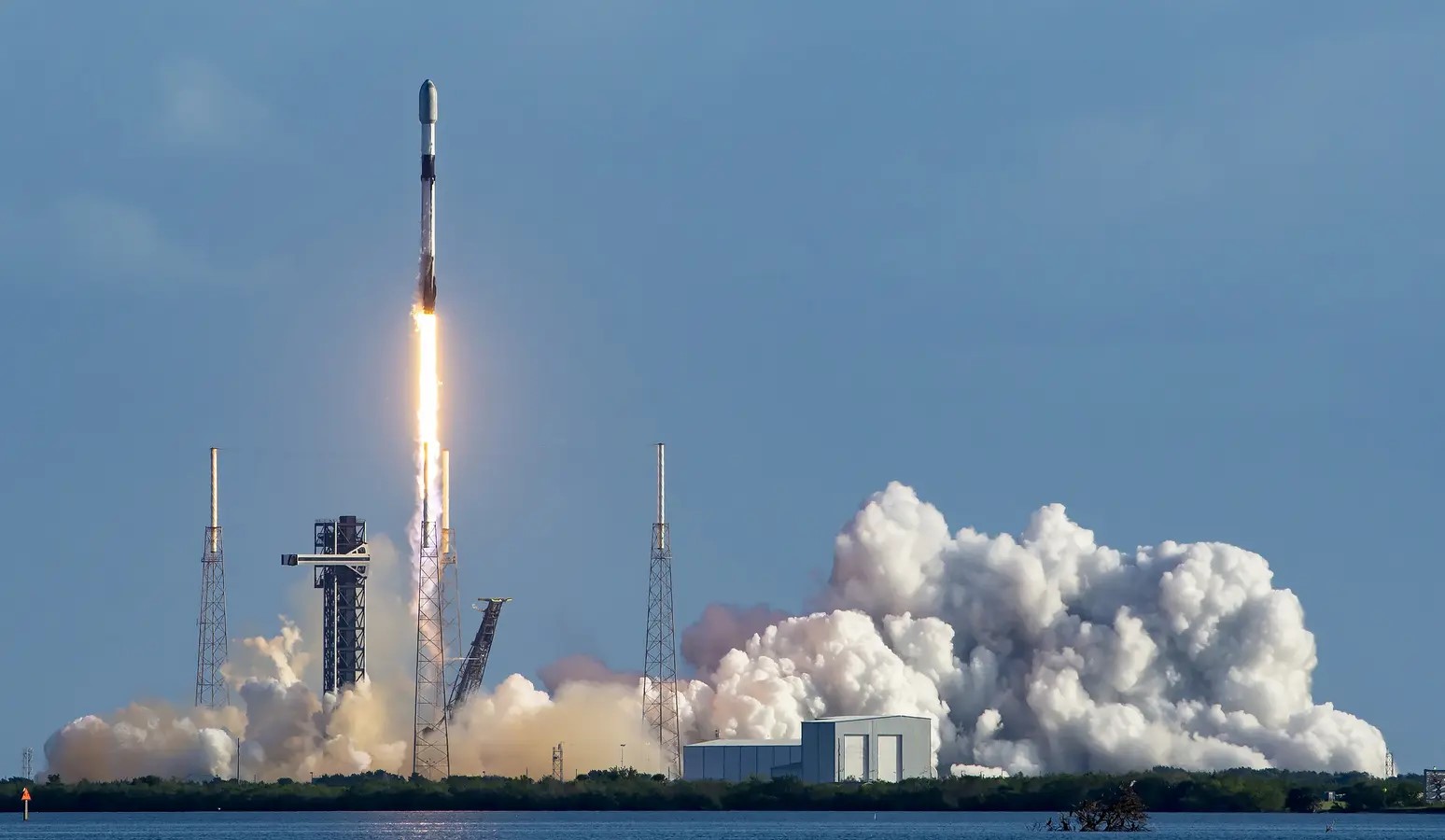In a groundbreaking achievement for India’s space exploration efforts, Elon Musk’s SpaceX launched the GSAT-N2 satellite, developed by the Indian Space Research Organisation (ISRO). This marks the first time ISRO has partnered with SpaceX, a collaboration that will boost broadband and in-flight internet connectivity across India.

The Launch: A Historic Moment
On November 19, 2024, at 12:01 AM IST, SpaceX’s Falcon 9 rocket lifted off from the Cape Canaveral Space Force Station in Florida. The rocket successfully deployed the GSAT-N2 satellite into a geosynchronous transfer orbit from Space Launch Complex 40 (SLC-40). This launch is notable for being the first joint mission between SpaceX and India, which has typically relied on European launch providers like Arianespace for heavy satellite launches.
The GSAT-N2 weighs approximately 4,700 kilograms and is part of NewSpace India Limited (NSIL), the commercial arm of ISRO. This collaboration with SpaceX is particularly significant given that Arianespace, India's former launch service provider, is currently facing challenges with its operational rockets.
Key Features of the GSAT-N2 Satellite
The GSAT-N2 satellite is designed to improve India’s broadband services and provide internet connectivity for remote and underserved regions of the country. Here are the main features that make this satellite a game-changer:
-
High-Throughput Satellite (HTS) : GSAT-N2 comes equipped with Ka-band HTS transponders, offering a total throughput of 48 Gbps. This high-speed data transfer will significantly enhance communication services.
-
32 User Beams : The satellite features 32 beams, including eight narrow spot beams focused on the Northeast region of India and 24 wide beams covering the rest of the country. This configuration ensures a broad and efficient distribution of internet services.
-
Remote Area Coverage: The GSAT-N2 satellite will provide internet connectivity to regions that were previously hard to reach, including remote areas like the Andaman & Nicobar Islands and Lakshadweep.
-
Inflight and Maritime Connectivity In addition to enhancing broadband, GSAT-N2 will support Inflight and Maritime Telecom Connectivity (IFMC). This is crucial for improving services for both aviation and maritime industries.
-
Long Mission Life : With a mission life of 14 years, GSAT-N2 is expected to play a crucial role in India’s digital development for over a decade.
How GSAT-N2 Will Benefit India
The GSAT-N2 satellite is a major step forward for India, and its impact will be felt across several sectors:
-
Improved Connectivity: The satellite’s 48 Gbps throughput and 32 user beams will provide faster and more reliable internet across the country, even in remote and rural areas. This will support the Digital India initiative by helping bridge the digital divide.
-
Boosting Critical Industries: By enhancing connectivity, GSAT-N2 will support industries like aviation, shipping, and remote education. This will not only improve the quality of life for individuals but also contribute to the growth of these sectors.
-
Support for Government Programs: The satellite’s extensive coverage will help further government programs like telemedicine, distance learning, and rural development by providing access to essential services.
Why India Turned to SpaceX
India has traditionally relied on Arianespace, a European satellite launch company, for launching its heavy communication satellites. However, with Arianespace currently lacking operational rockets, India needed a reliable alternative. SpaceX, known for its cost-effective and reusable rockets, presented an excellent solution.
The Falcon 9 rocket used for the GSAT-N2 mission has an impressive track record. This particular booster had previously completed 18 successful missions, including launching satellites for SES, HAKUTO-R Mission 1, and numerous Starlink missions. Its reusability and cost-effectiveness have made it a preferred option for global satellite launches.
Looking Ahead: What’s Next for ISRO and SpaceX?
The successful launch of GSAT-N2 is just the beginning of what could be a long-term partnership between ISRO and SpaceX. With SpaceX continuing to lead in reusable rocket technology, India now has access to more cost-effective solutions for its space missions.
Additionally, the GSAT-N2 satellite’s advanced technology and its long lifespan will provide India with critical communication infrastructure for years to come. This collaboration signals the future direction of India’s space ambitions, with an increasing focus on global partnerships and technological innovation.
ConclusionThe launch of GSAT-N2 by SpaceX is a historic moment for India’s space program. It marks a new era of international cooperation and technological advancements that will benefit not only India but the world. As India continues to embrace cutting-edge space technology and collaborate with global leaders, the GSAT-N2 satellite is poised to play a pivotal role in shaping the future of broadband connectivity, both in India and globally.
This mission highlights the growing capabilities of ISRO and strengthens its position as a leader in the global space industry. With more launches and collaborations like this on the horizon, India is set to make even greater strides in space exploration in the years to come.
